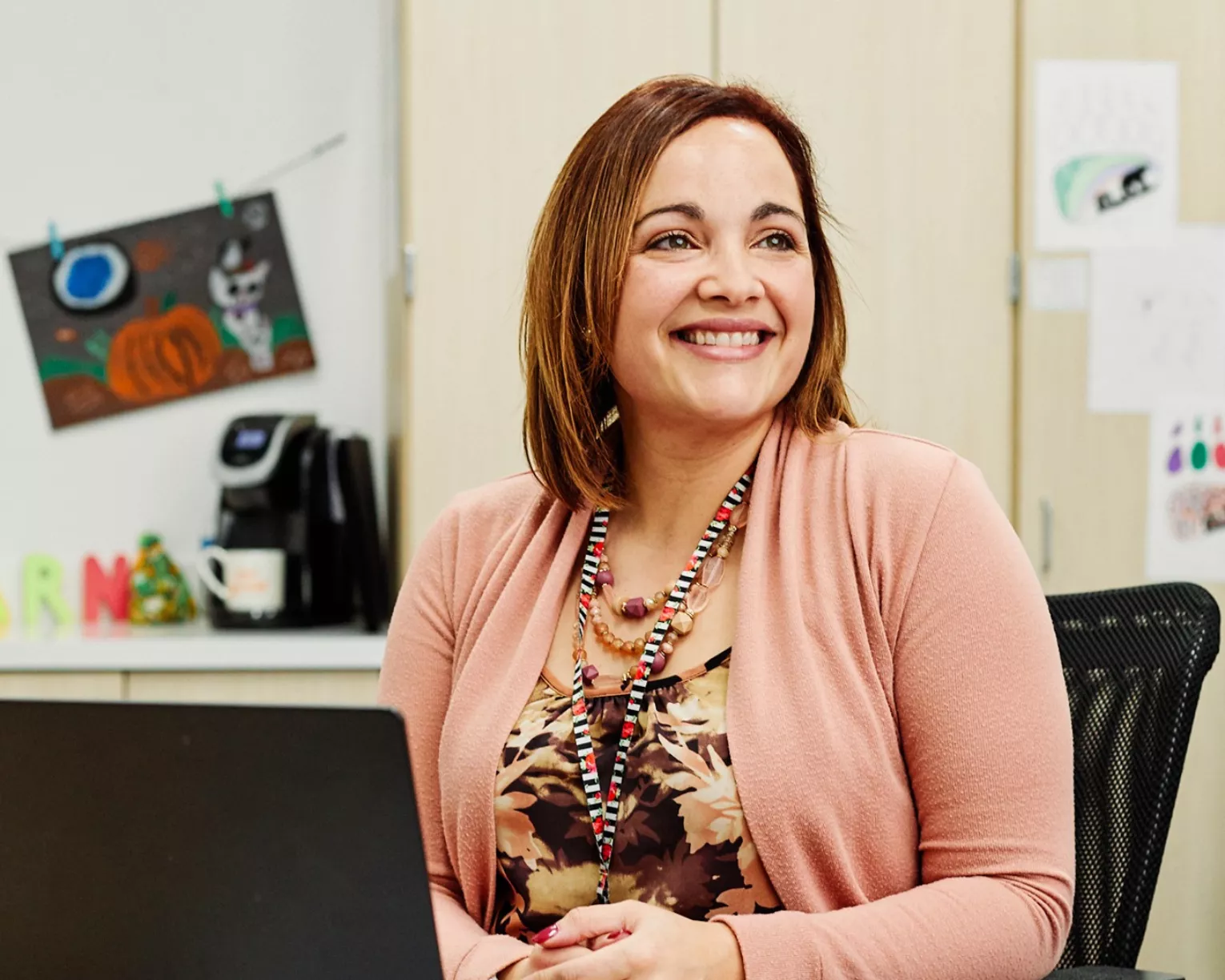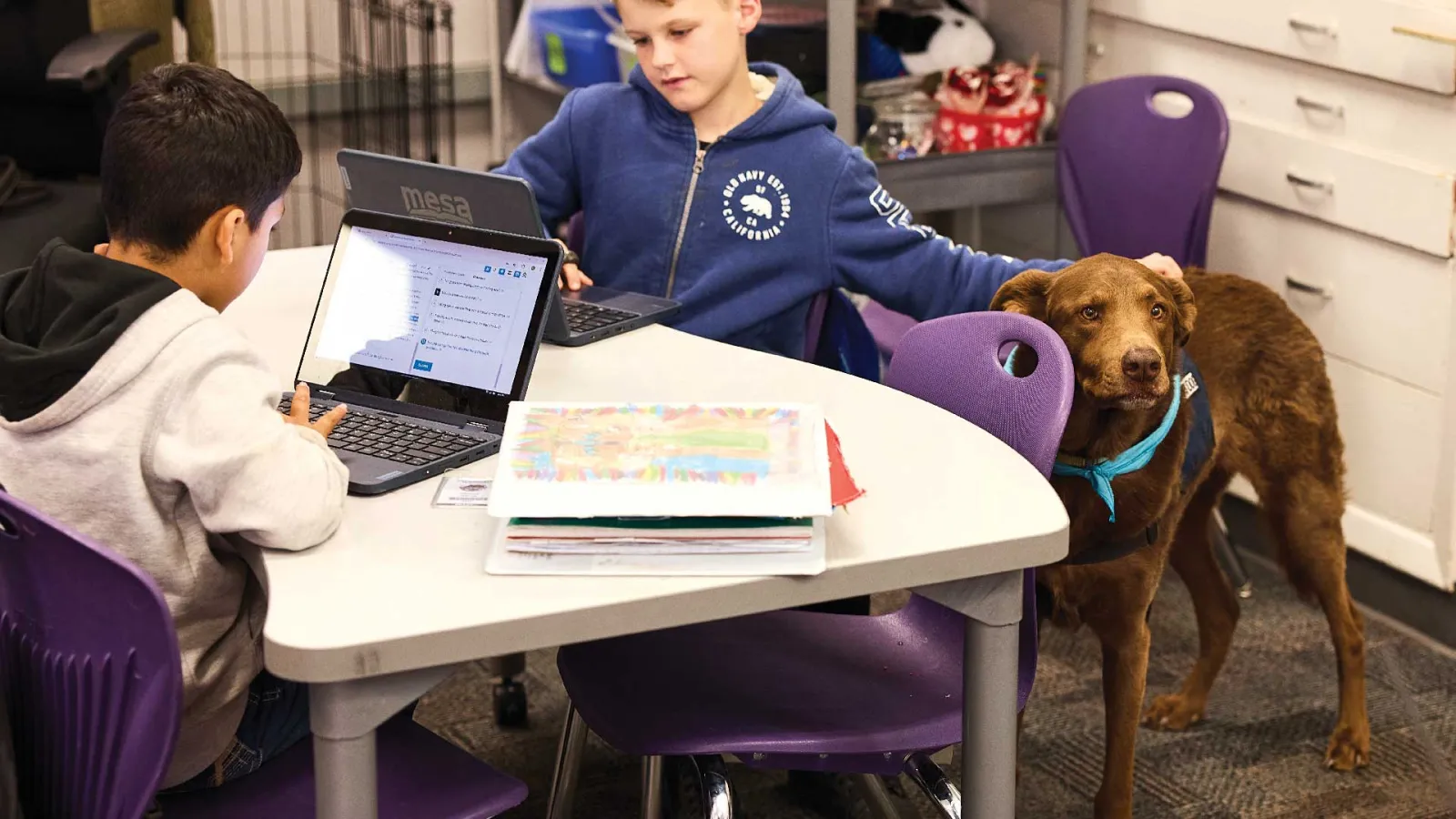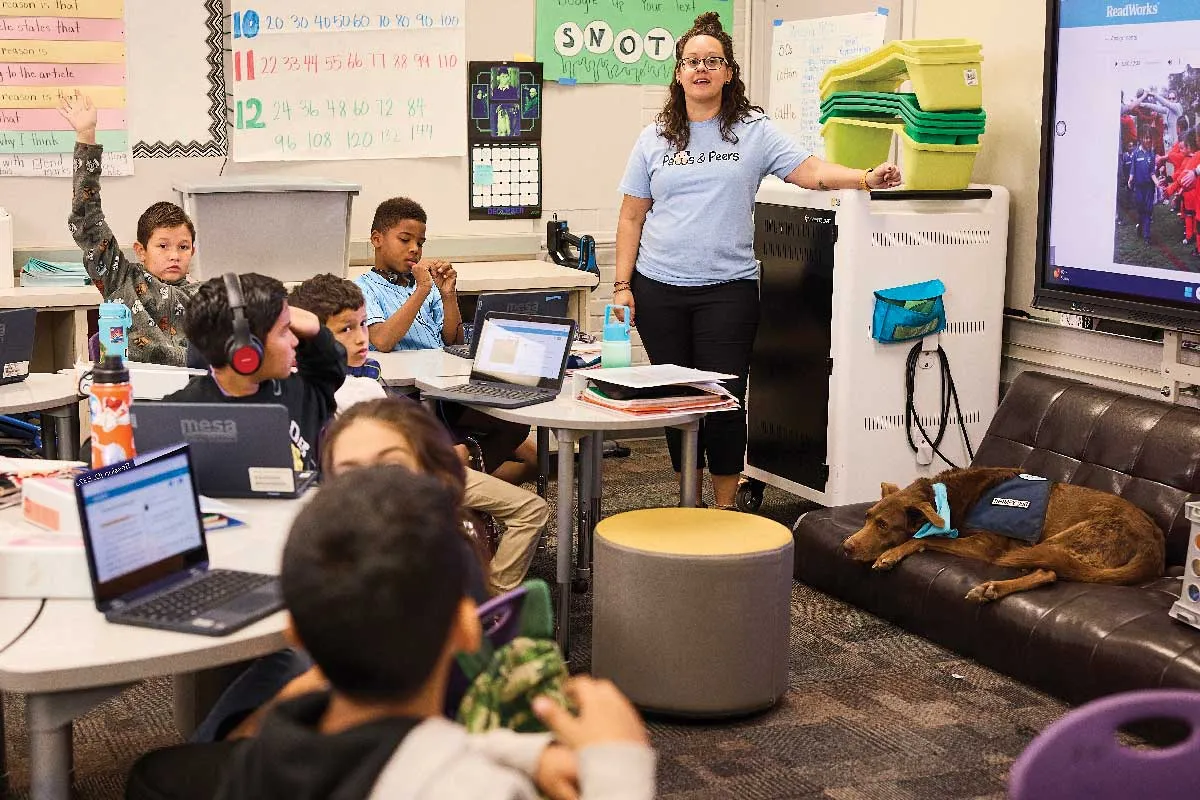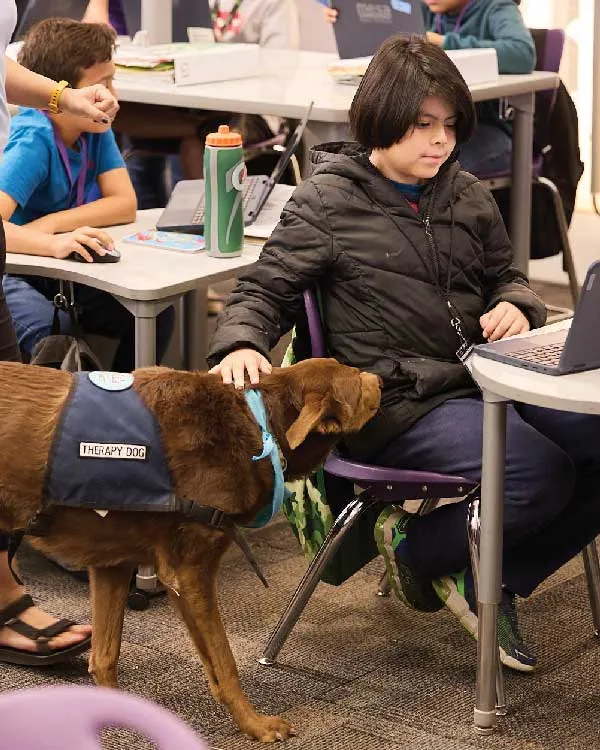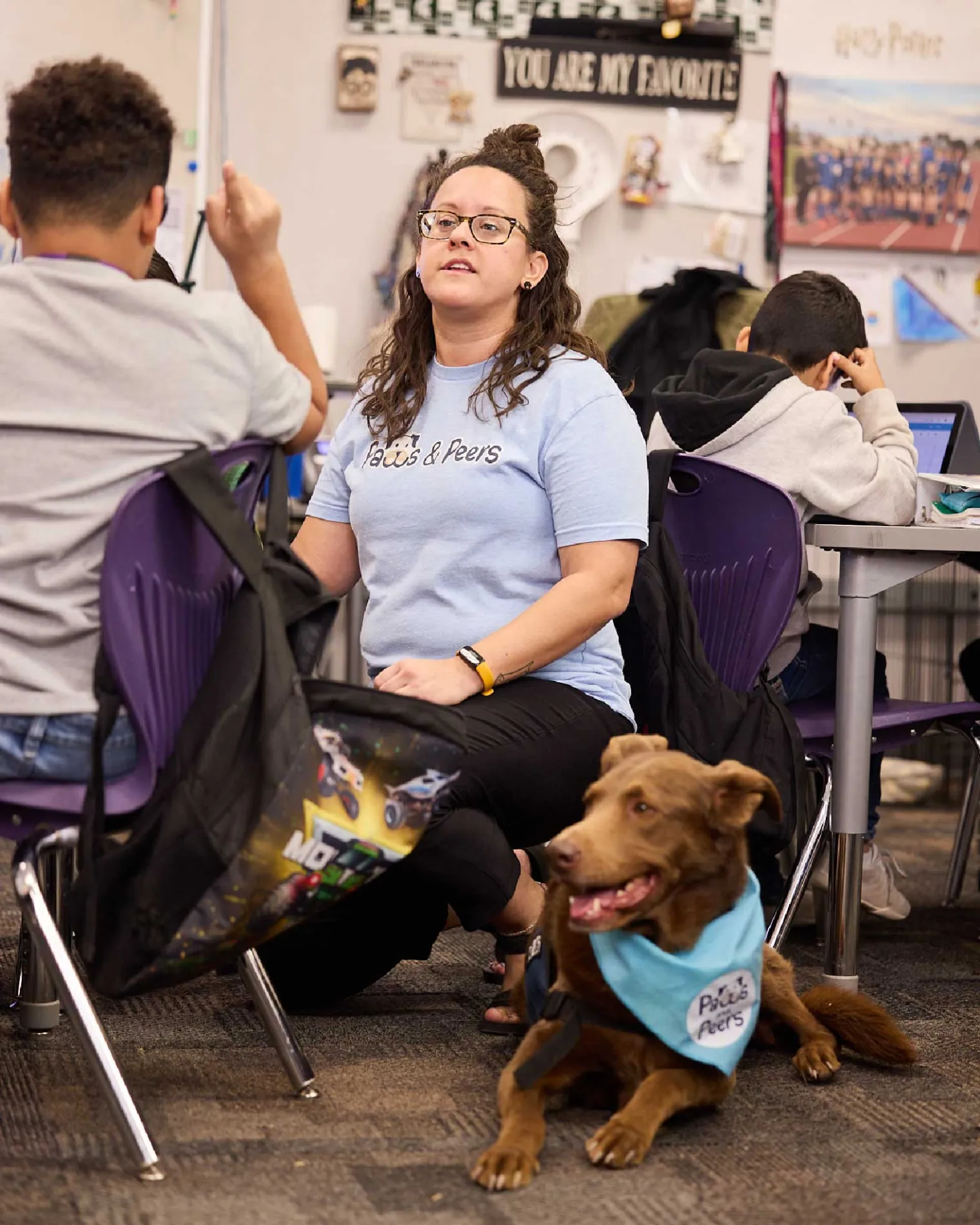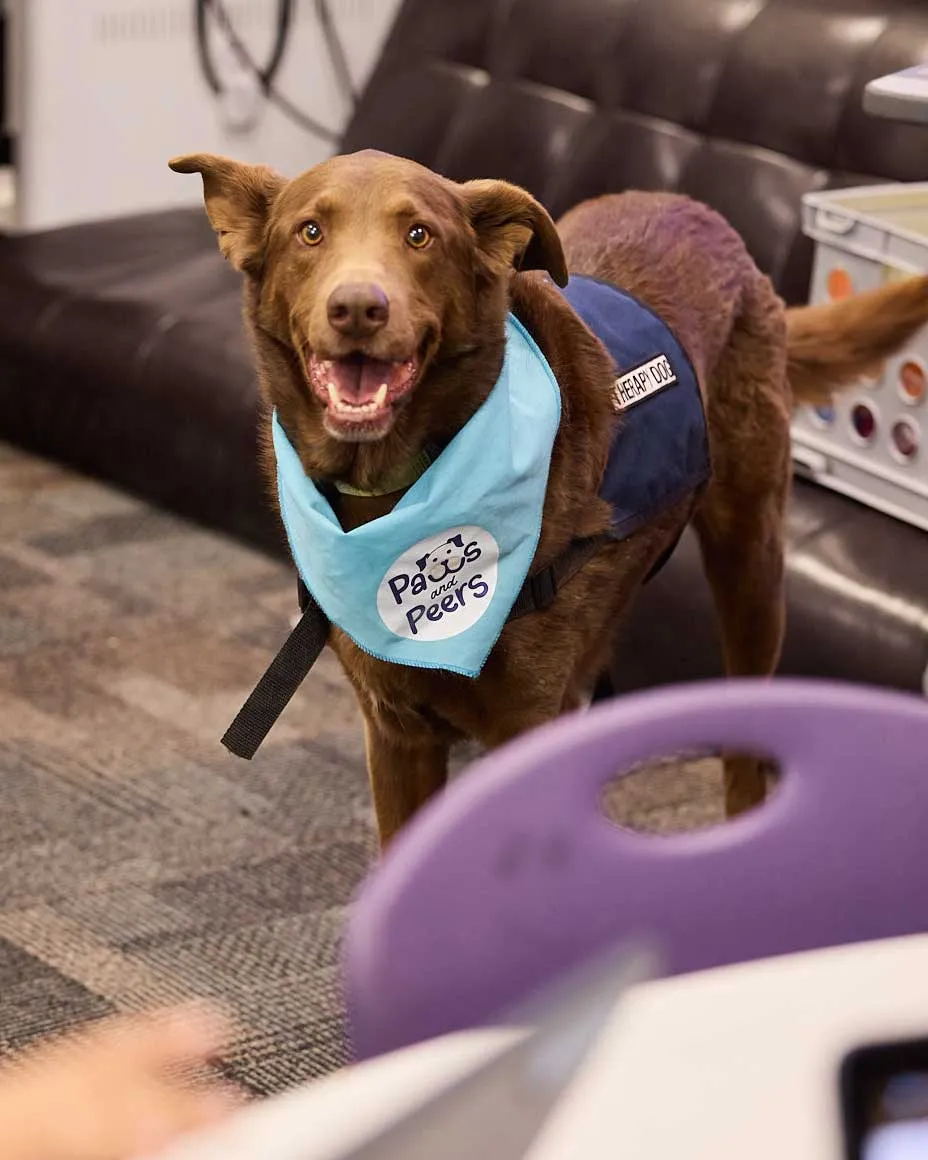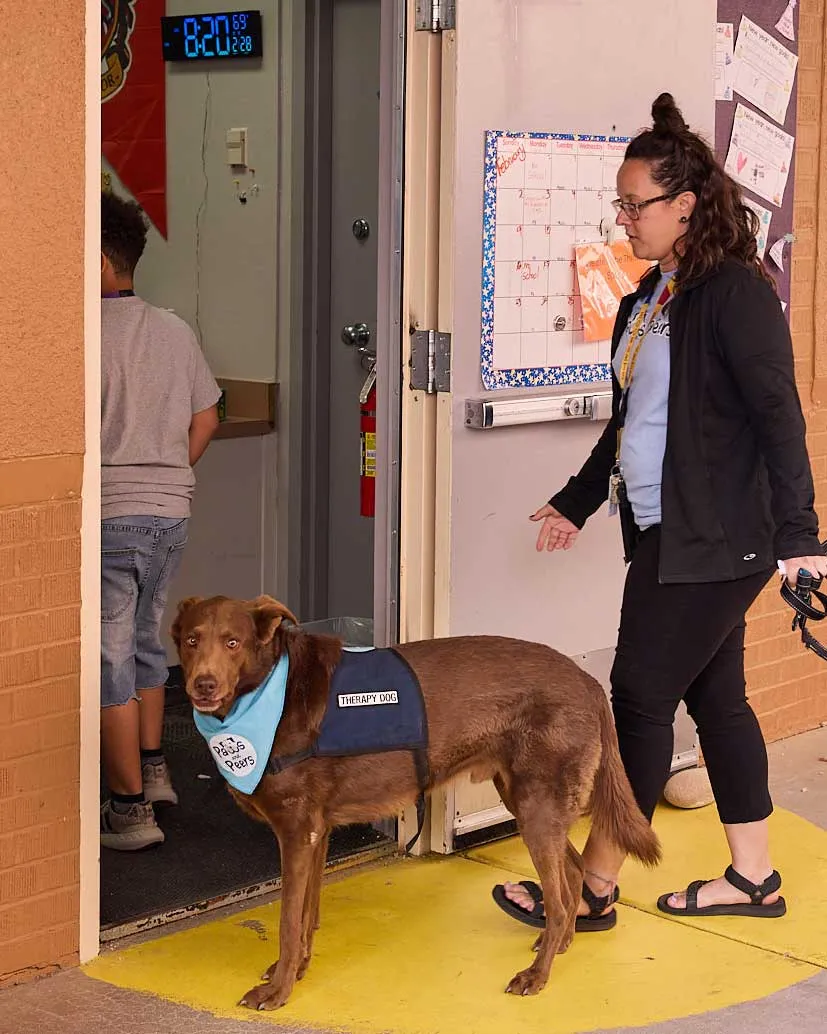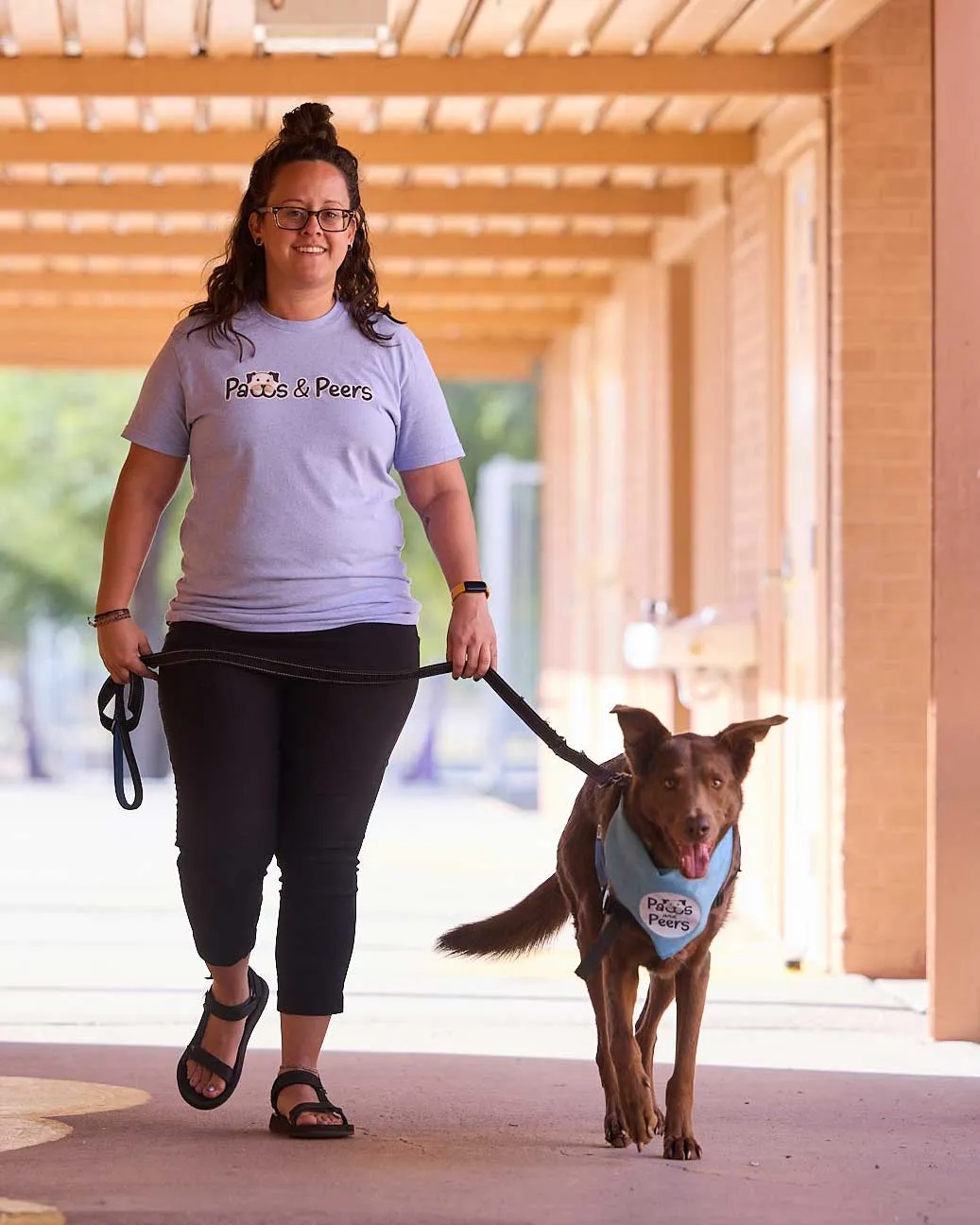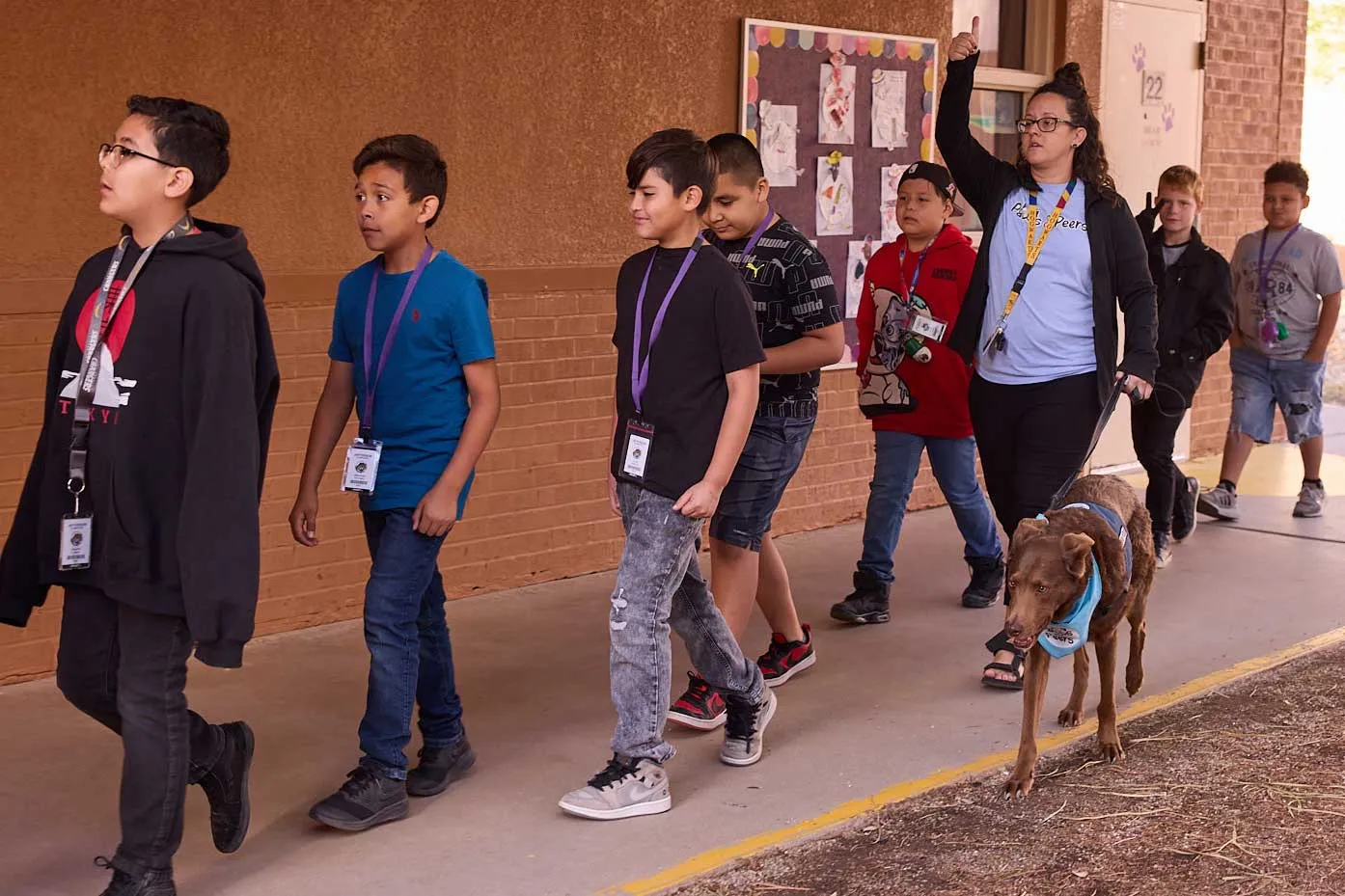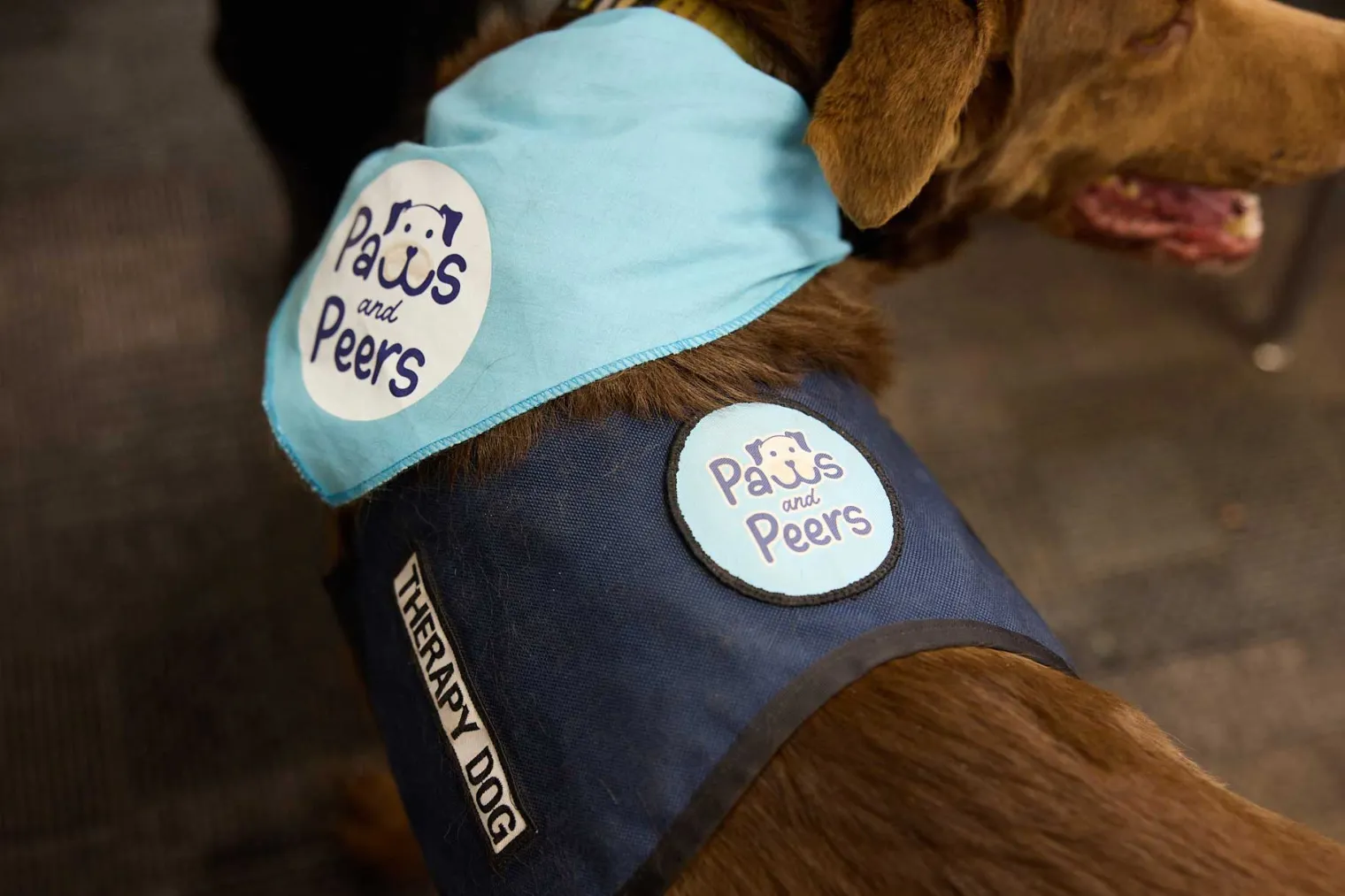

When Lindsay Dominguez’s principal heard about the Paws & Peers therapy dog program, she dashed off an email to Dominguez: “With all the dogs in your house, you must have one that would work for this!”
Everybody knows Dominguez is a dog person. And she had the perfect pupper for the job.
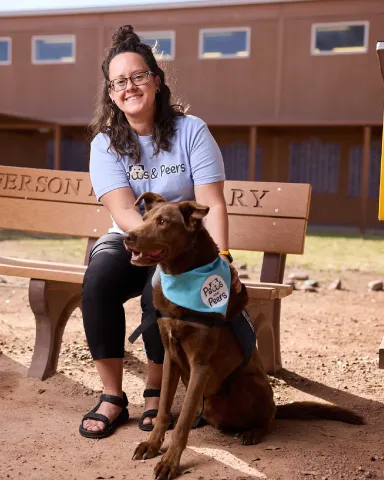
When she first adopted Hotch, he was a wild-haired, all-legs puppy with a sweet disposition. Today, he’s one of more than 80 active therapy dogs with Paws & Peers, and a member of the third-grade teaching team at Jefferson Elementary, in the Mesa, Ariz., school district.
Before school starts, he greets every grown-up. After the bell, he walks third graders to specials, stopping for pets from students along the way. (Does Dominguez dip him in oxytocin? No. But research shows that petting dogs boosts feel-good hormones while reducing production of the stress-hormone cortisol.)
After lunch, Hotch “oversees” learning projects like a Zen instructional coach. That is … he naps under the desk.
“He’s maybe shepherd or chocolate lab? Maybe cattle dog? He’s a mystery dog, but 100 percent good boy,” Dominguez says.
Paws & Peers, the nation’s largest school therapy dog program, is full of good boys—and girls! What’s more, these bushy-tailed, canine “co-teachers” pack a pedagogical punch. Indeed, Arizona State University associate professor Kathleen Farrand’s ongoing research shows a positive impact on students and educators.
‘She Brings Joy!’
Schools swirl with hard-to-manage emotions. There’s the stress of teaching in a red-hot political climate. Plus, the increasing, post-pandemic volatility of students. Mental health issues—among both students and staff—are more prevalent. Workloads are soaring. School shootings are a terrifying backdrop.
None of that fazes Gizmo, a possible Chigi (Chihuahua plus corgi). Found abandoned at a park 10 years ago, Gizmo is a 20-pound lovebug with deep brown eyes.
“My principal will come in, or teachers will come in, and they’ll say, ‘I need some Gizmo time,’” says Stephanie Solis, a sixth-grade teacher at Mesa’s Salk Elementary School.
Preschool teacher Monica Massey says her chunky rescue pug, Alice, spreads good vibes, too.
“She brings joy!” says Massey, of Adams Elementary. (FYI: Alice’s favorite snack is chicken nuggets.)
In 2020, Mesa piloted Paws & Peers in five schools, with the goal of improving students’ mental health. Today, it’s in 45 district locations. Each dog-and-educator team goes through six weeks of basic training and eight weeks of specialized training, and must pass an official evaluation. Unlike programs that send in dogs after traumatic events, Mesa’s dogs typically go to school two days a week, every week.
And yes, they have helped students’ mental health. But that’s not all.
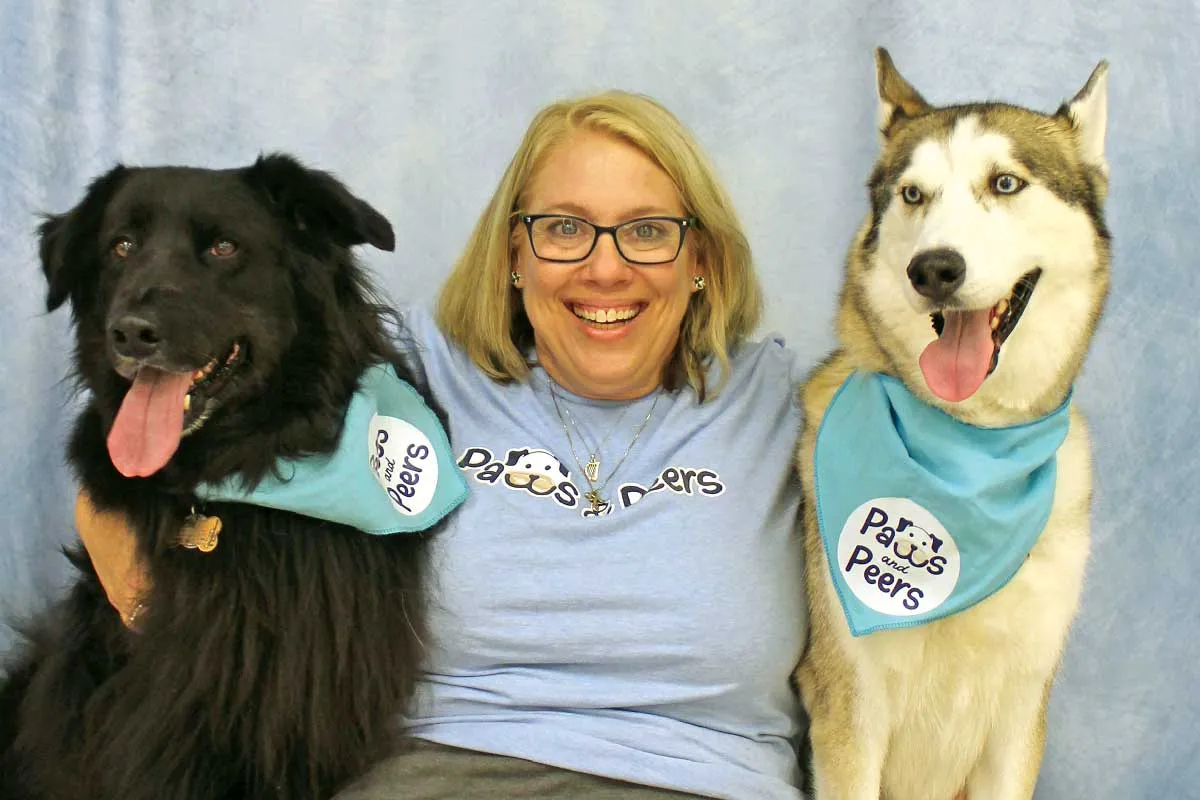
Animal Intuition
Bear and Olaf motivate students, notes Kino Junior High School STEM teacher Nancy Parra-Quinlan. Recently, her engineering students used 3D-modeling software to design dream houses for their classroom canines. A key incentive? The chance to measure the magnificent tail of Olaf the rescue husky.
They also teach responsibility. Who wants to walk Olaf? Can somebody check on Bear’s water?
Olaf is Mr. Personality and flops among students’ desks, demanding they step over him. Bear is a mix of herding breeds—what locals call a “rez dog.” He’s shyer, but Parra-Quinlan sees him leaning against the students who most need his emotional support.
Dogs often know more about people’s needs than we do, notes Tommy Tomlinson, author of the book Dogland. For thousands of years, they’ve been watching and learning about us.
Not long ago, Dominguez noticed how Hotch paused at the same cafeteria table every day to lean against the same second grader.
“I reached out to his teacher and was like, ‘I don’t know, maybe I’m being weird because I’m a dog person, but what do we know about this kid?’” It turns out his family had recently lost their home. “We may not have known of his need without Hotch,” Dominguez says.
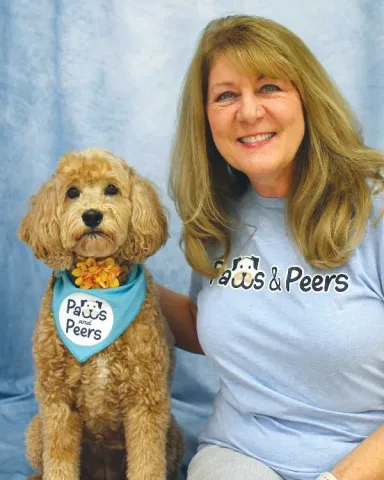
Mesa school psychologist Susan Osman sees how intuition guides labradoodle Mazie. “Even as a puppy, when somebody was upset, she’d go and sit on their lap,” she says.
Today, Osman and Mazie meet with students with emotional and behavioral issues, and Osman notes how Mazie attaches to the children who most challenge adults. “She’s so unconditional in her love.”
It’s like the dogs have a sixth sense for kids on the verge of meltdown, Farrand says. They’ll get up, walk over, and lean against their side. Situation defused. Often, students with emotional issues learn to take themselves out of a situation and go to a calming corner.
“A minute later, the student has a hand on the dog,” Farrand says. “And a minute later, the student is able to turn around and talk to the teacher.”
Thank You, Hotch!
These benefits to students aren’t shocking. After all, that was the point. “But I’m noticing the impact is as great—or even more so—for faculty and staff,” Farrand says. “So many staff members talk about how [seeing the dogs] motivates them to come to work. Adults have bad days too, right? And the dogs lift them up.”
Another unexpected effect: a growing sense of community. Dogs like Olaf say hi to everyone. He is the guy you want at every party, sparking conversations among the unlikeliest friends and building relationships.
All of this is hard work! At the end of the day, Hotch may earn a pup cup. More often, he and Dominguez go straight home where, like a lot of educators, Hotch flops on the couch. “I can hear him snoring!” Dominguez says.
Hotch's Day
Meet the Team!
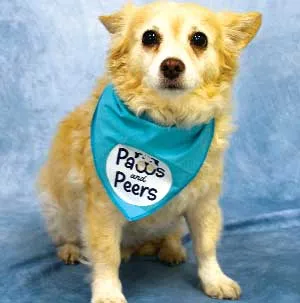
Name: Gizmo
Human Partner:
Stephanie Solis, sixth-grade teacher
Favorite snack:
Chicken, beef, and pork kebab
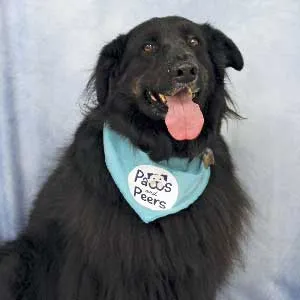
Name: Bear
Human Partner:
Nancy Parra-Quinlan, STEM teacher
Favorite Pastime:
Staring into students’ eyes
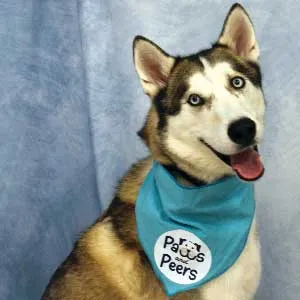
Name: Olaf
Human Partner:
Nancy Parra-Quinlan
Favorite words:
“Do you want to go to school?”
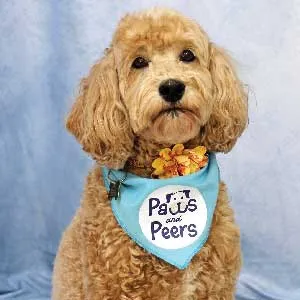
Name: Mazie
Human Partner:
Susan Osman, school psychologist
Job experience:
Therapy dog in hospitals, before working in schools
